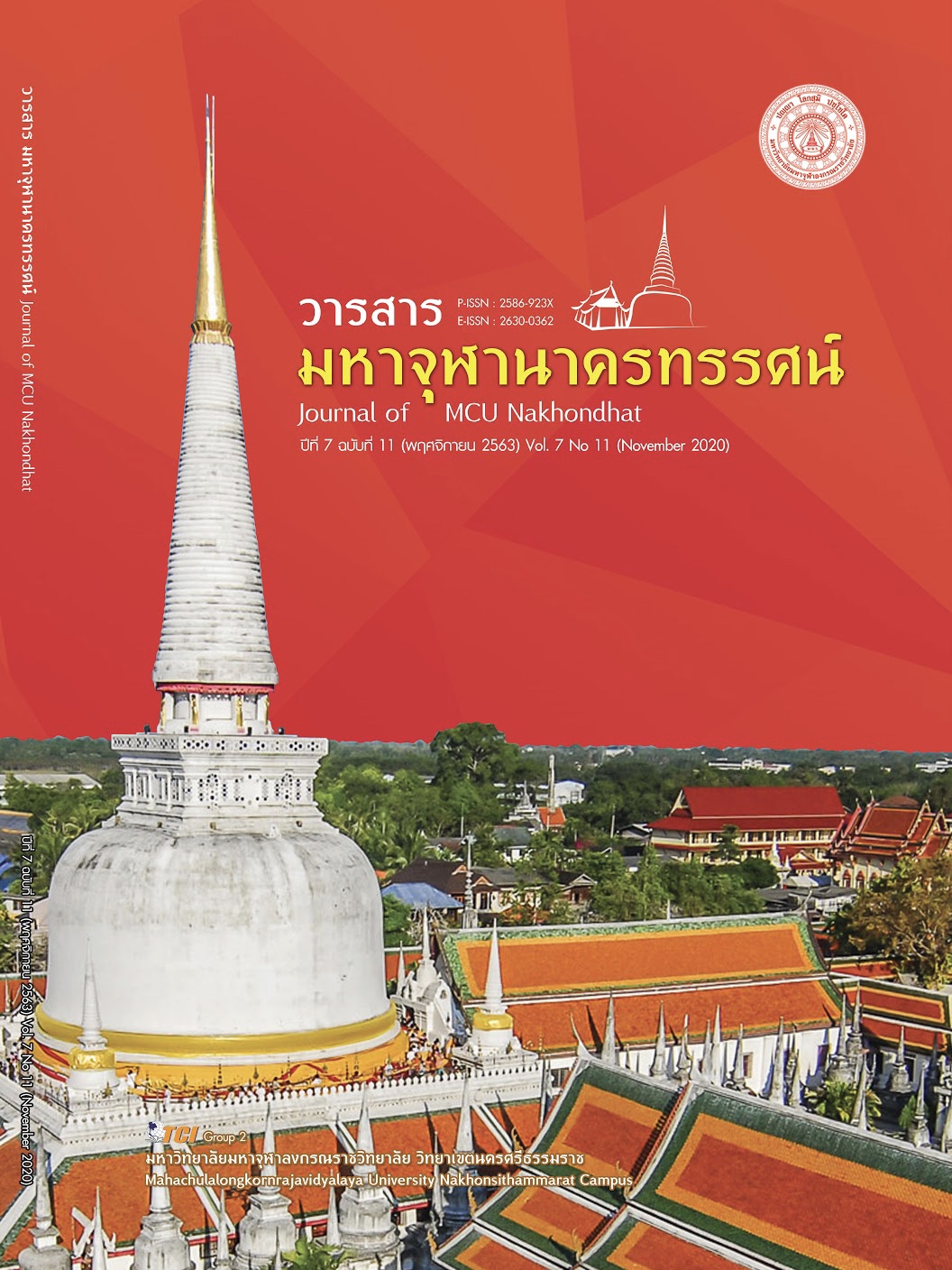THE CONSTRUCTING OF ASSESSMENT MANUAL FOR MATHEMATICAL UNDERSTANDING ON POLYNOMIAL OF EIGHTH GRADE STUDENTS BY USING FEEDBACK TECHNIQUE ACCORDING TO THE LEARNING ASSESSMENT CONCEPT
Main Article Content
Abstract
The purposes of this article are 1) to create a guide to assess mathematical understanding, 2) to try using a guide for assessing mathematical understanding and 3) to evaluate the use of the guide for assessing mathematical understanding. The target groups in this research consist of 1) 5 mathematical experts and 2) the samples used in the research were the students from a class studying in the eighth grade students by the specific sample selection method. The research tools consisted of 1) document synthesized table form, 2) evaluation form for a guide to assess mathematical understanding, 3) mathematical understanding tests, 4) the guide to assess mathematical understanding and 5) mathematics satisfaction survey form in using the guide to assess mathematical understanding. The statistics used are mean and standard deviation. The results of the study showed that the content is suitable for learners and their grade level, the activities encourage students to search for the answers by themselves. The results of the qualitative data quality examination from the experts found that the average level is 4.40, which is in a very good level. The experimental study of the guide to assess mathematical understanding by the action research found that the students can reason by applying mathematical principles to explain mathematical reasoning, concepts and solve more complex problems correctly. The best feedback technique for students to respond is the teacher questioning technique. The result of comparing the mathematical understanding of the students before and after learning was found that after learning the students can understand the lesson better than before with the statistical significance of 0.05. The results of the evaluation of the manual by the sample group can be summarized as follows: in the learning activities, students felt that they were encouraged to learn with their peers with the highest mean of 4.45. As for the assessment, the students felt that they had participated in the assessment with the highest mean of 4.46. As for the benefits, the students felt they were able to work with others with the highest mean of 4.50.
Article Details
References
กระทรวงศึกษาธิการ. (2551). หลักสูตรแกนกลางศึกษาขั้นพื้นฐาน พุทธศักราช 2551. กรุงเทพมหานคร: โรงพิมพ์ชุมนุมสหกรณ์การเกษตรแห่งประเทศไทยจำกัด.
กฤษณะ อ่อนเอื้อง และคณะ. (2558). แนวทางการประเมินเพื่อการเรียนรู้วิชาคณิตศาสตร์ สำหรับนักเรียนชั้นมัธยมศึกษาปีที่ 4. วารสารวิชาการศึกษาศาสตร์ มหาวิทยาลัยศรีนคริทรวิโรฒ, 16(2), 1-14.
กิ่งฟ้า สินธุวงศ์. (2552). การประเมินเพื่อพัฒนาการเรียนรู้. วารสารวิชาการ มหาวิทยาลัยราชภัฏบุรีรัมย์, 1(1), 6-19.
ชูศรี วงศ์รัตนะ. (2550). เทคนิคการใช้สถิติเพื่อการวิจัย. (พิมพ์ครั้งที่ 10). กรุงเทพมหานคร: ศูนย์หนังสือจุฬาลงกรณ์มหาวิทยาลัย.
พร้อมพรรณ อุดมสิน. (2544). การวัดและประเมินผลการเรียนการสอนคณิตศาสตร์. กรุงเทพมหหานคร: โรงพิมพ์แห่งจุฬาลงกรณ์มหาวิทยาลัย.
พัชรพร สันติวิจิตรกุล. (2553). การพัฒนาคู่มือวิจัยในชั้นเรียนสำหรับครูผู้สอนในโรงเรียนองค์การบริหารส่วนจังหวัดสุราษฎร์ 1 (ดอนสักผดุงวิทย์). ใน วิทยานิพนธ์ครุศาสตรมหาบัณฑิต สาขาวิชาการบริหารการศึกษา. มหาวิทยาลัยราชภัฏสุราษฎร์ธานี.
พิชิต ฤทธิ์จรูญ. (2559). การประเมินเพื่อพัฒนาการเรียนรู้. วารสารศึกษาศาสตร์ มสธ , 9(1), 1-17.
สถาบันทดสอบทางการศึกษาแห่งชาติ. (2562). ระบบประกาศและรายงานผลสอบโอเน็ต. เรียกใช้เมื่อ 3 เมษายน 2562 จาก http://www.newonetresult.niets.or.th/ AnnouncementWeb/Login.aspx
สำนักวิชาการและมาตรฐานการศึกษา. (2560). การประเมินเพื่อการเรียนรู้: การตั้งคำถามและการให้ข้อมูลย้อนกลับเพื่อส่งเสริมการเรียนรู้. (พิมพ์ครั้งที่ 1). กรุงเทพมหานคร: โรงพิมพ์ชุมนุมสหกรณ์การเกษตรแห่งประเทศไทย.
อนงค์ เมธีพิทักษ์ธรรม. (2555). ผลของรูปแบบการให้ข้อมูลย้อนกลับที่แตกต่างกันที่มีต่อความสามารถในการแก้ปัญหาทางคณิตศาสตร์ของผู้เรียนระดับมัธยมศึกษาปีที่ 1. ใน วิทยานิพนธ์ครุศาสตรมหาบัณฑิต. สาขาการวัดและประเมินผลการศึกษา. จุฬาลงกรณ์มหาวิทยาลัย.
Aditi Banerjee. (2014). Improving Student’s Learning with Correct Feedback: A Model Proposed for Classroom Utility. International Journal of Education and Psychological Research (IJEPR), 3(4), 36-40.
Cronbach, L. J. (1990). Essentials of psychological testing. (3rd ed.). NY: Harper & Collins.
Susan M. Brookhart. (2008). How to Give Effective Feedback to your students Association for Supervision and Curriculum Development. Alexandria: ASCD.


